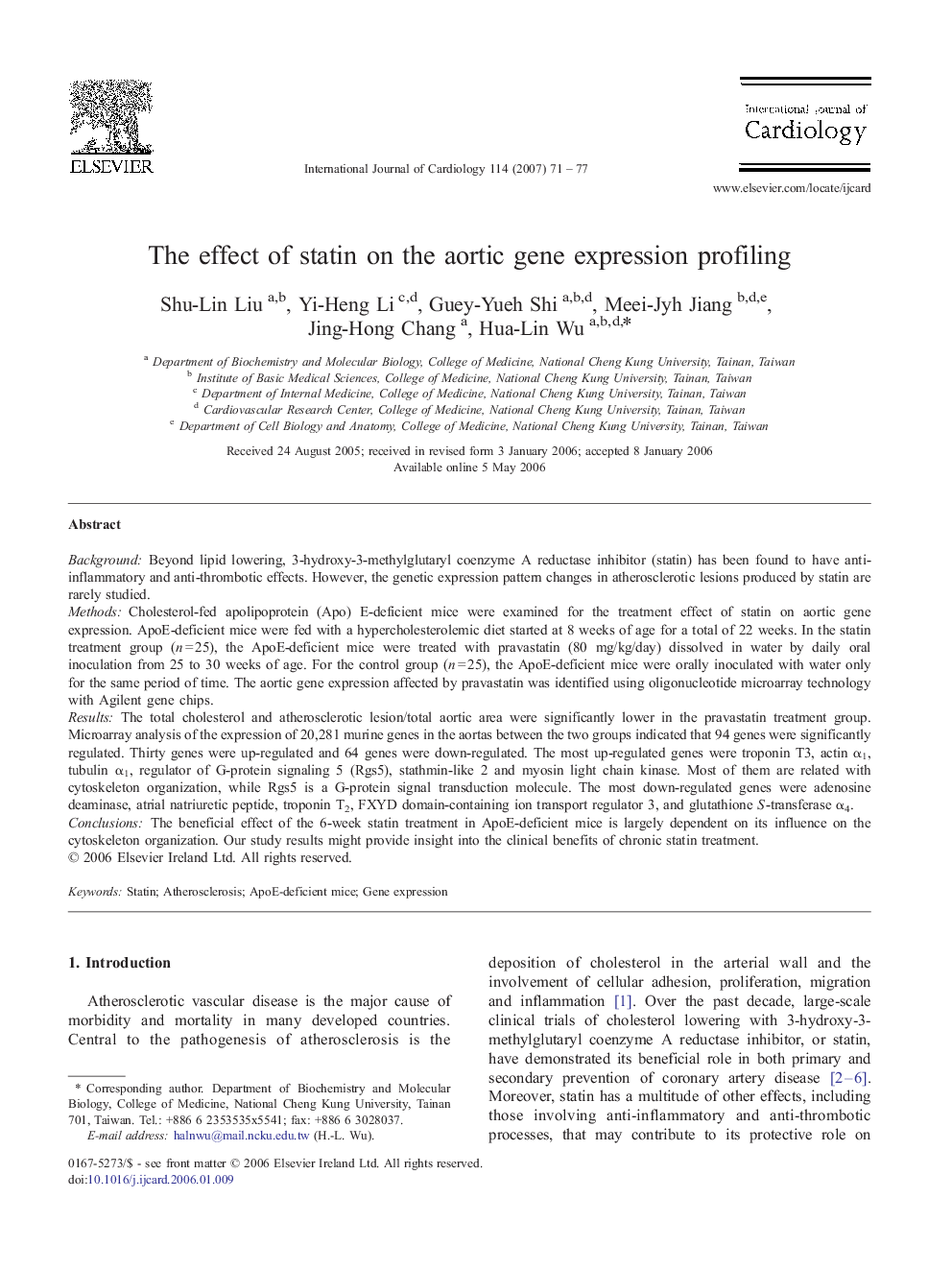| Article ID | Journal | Published Year | Pages | File Type |
|---|---|---|---|---|
| 2936249 | International Journal of Cardiology | 2007 | 7 Pages |
BackgroundBeyond lipid lowering, 3-hydroxy-3-methylglutaryl coenzyme A reductase inhibitor (statin) has been found to have anti-inflammatory and anti-thrombotic effects. However, the genetic expression pattern changes in atherosclerotic lesions produced by statin are rarely studied.MethodsCholesterol-fed apolipoprotein (Apo) E-deficient mice were examined for the treatment effect of statin on aortic gene expression. ApoE-deficient mice were fed with a hypercholesterolemic diet started at 8 weeks of age for a total of 22 weeks. In the statin treatment group (n = 25), the ApoE-deficient mice were treated with pravastatin (80 mg/kg/day) dissolved in water by daily oral inoculation from 25 to 30 weeks of age. For the control group (n = 25), the ApoE-deficient mice were orally inoculated with water only for the same period of time. The aortic gene expression affected by pravastatin was identified using oligonucleotide microarray technology with Agilent gene chips.ResultsThe total cholesterol and atherosclerotic lesion/total aortic area were significantly lower in the pravastatin treatment group. Microarray analysis of the expression of 20,281 murine genes in the aortas between the two groups indicated that 94 genes were significantly regulated. Thirty genes were up-regulated and 64 genes were down-regulated. The most up-regulated genes were troponin T3, actin α1, tubulin α1, regulator of G-protein signaling 5 (Rgs5), stathmin-like 2 and myosin light chain kinase. Most of them are related with cytoskeleton organization, while Rgs5 is a G-protein signal transduction molecule. The most down-regulated genes were adenosine deaminase, atrial natriuretic peptide, troponin T2, FXYD domain-containing ion transport regulator 3, and glutathione S-transferase α4.ConclusionsThe beneficial effect of the 6-week statin treatment in ApoE-deficient mice is largely dependent on its influence on the cytoskeleton organization. Our study results might provide insight into the clinical benefits of chronic statin treatment.
